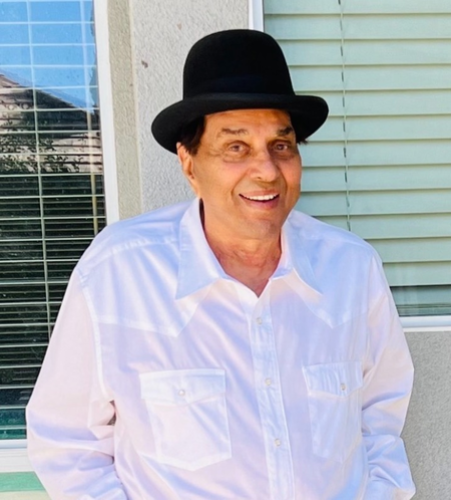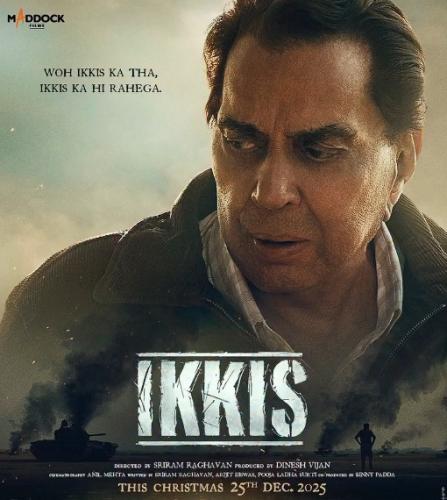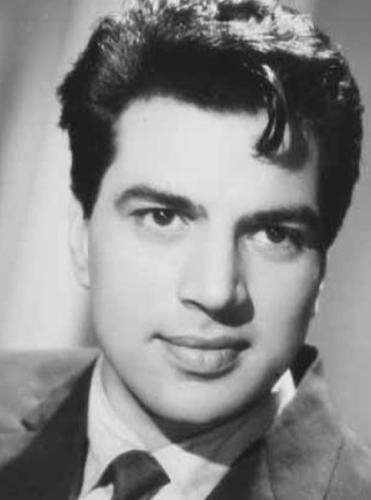Mumbai: The world of Indian cinema has lost one of its most iconic and enduring stars. Dharmendra, affectionately known as Bollywood’s “He-Man,” passed away at the age of 89 in his Mumbai home on November 24, 2025. His death, coming just days after he'd been discharged from Breach Candy Hospital where he had been treated for respiratory issues, has sent ripples of grief through the film fraternity and the millions of fans whose lives he touched
From the quiet lanes of Punjab to the flashing lights of Bollywood, Dharmendra’s life was the stuff of legend. Born Dharmendra Kewal Krishan Deol on December 8, 1935, in the rural hamlet of Nasrali (Ludhiana district), he grew up in Sahnewal, where his father was the headmaster of the village school. Those early years in Punjab shaped his character—humble, hardworking, grounded—and these traits followed him throughout his career and life.
In his late teens, Dharmendra was married to Prakash Kaur, before he ever set foot in a film studio. But destiny had something else in store. A talent contest organised by a film magazine drew him to Mumbai. He seized the opportunity, and in 1960, he made his screen debut in Dil Bhi Tera Hum Bhi Tere, marking the beginning of a career that would span six decades.
In the early years, he oscillated between roles that demanded pathos and simplicity—in films like Bandini, Anpadh, and Aaya Sawan Jhoom Ke—always bringing a natural sincerity to the parts. As his star rose, he began embracing action, drama, romance, and comedy with equal ease. He became synonymous with larger-than-life heroism in films like Mera Gaon Mera Desh, while his romantic charm shone in classics such as Phool Aur Patthar and Yaadon Ki Baarat. But perhaps it was Sholay (1975) that immortalized him: playing Veeru opposite Amitabh Bachchan’s Jai, Dharmendra carved out a place in the hearts of millions and became a defining face of Indian cinema.
Comedy came naturally to him too. His effortless timing in Chupke Chupke showcased a gentler, more playful side of his personality that endeared him to audiences beyond action and romance. This versatility—moving from gritty drama to whimsical laughter—defined his golden years in the industry. As he matured, he refused to be boxed in: he embraced fatherly roles, took part in slapstick comedies, and even in his late career, connected deeply with younger generations through films like Life in a… Metro and the Yamla Pagla Deewana series alongside his sons.
But Dharmendra was not just a screen hero. Off-screen, he remained deeply rooted. Despite his larger-than-life image, he lived simply, often sharing glimpses of his love for farming, tractors, and a life in harmony with the land—even late into his 80s. Known for his humility, he was respected not just by fans, but by his co-stars, directors, and the entire film fraternity. Many spoke of the warmth he carried, the grace with which he handled fame, and the generous spirit that never wavered under the glare of the spotlight.
His personal life was complex and compelling. He married Hema Malini in 1980, after having already built a life with Prakash Kaur, and went on to father six children: Sunny Deol, Bobby Deol, Esha Deol, as well as Ahana, Ajeeta, and Vijeta. Over time, the Deol family became one of Bollywood’s most recognized dynasties, with his sons and daughter continuing his legacy on screen.
In 2004, Dharmendra extended his influence beyond cinema by stepping into public service. He was elected as a Member of Parliament, representing the Bharatiya Janata Party from 2004 to 2009. This chapter of his life revealed another facet of his persona: a man committed to his roots, to his people, and to a vision greater than himself. In 2012, he was honored with the Padma Bhushan, one of India’s highest civilian awards, in recognition of his monumental contribution to Indian cinema.
The love Dharmendra inspired was not only professional—it was deeply personal to his fans. For millions who grew up watching his films, he was more than an actor. He was a symbol of strength, nobility, and an old-world charm that mixed action with vulnerability. His magnetism on screen made him a heartthrob; off screen, his authenticity made him a kind of cultural elder figure. When news of his health scare broke in November 2025, the nation gripped its breath. False reports of his death circulated rapidly, triggering waves of grief on social media. But his family stepped in—the media frenzy was real, but so was his resilience. His daughter Esha Deol and wife Hema Malini reassured the public that he was recovering, demanding respect for their privacy in a storm of speculation.
When he finally passed, tributes poured in from across the spectrum—political leaders, fellow actors, and millions of fans. Prime Minister Narendra Modi called his death “the end of an era,” highlighting Dharmendra’s rare combination of versatility, simplicity, and strength Fellow actors such as Amitabh Bachchan, Aamir Khan, and Salman Khan paid their respects at his funeral, held at the Pawan Hans Crematorium in Mumbai.
His legacy is not confined to the hundreds of films he made. It lives in the way Indian cinema evolved, in how he bridged a generation that rested on melodrama and action, and moved toward more nuanced storytelling. He embodied the archetypal hero, but he also embraced the everyman. He was as comfortable with tragedy and heroics as he was with laughter and love.
Perhaps what made Dharmendra eternally special was his unwavering humility. Despite fame, decades in the limelight, and a life few could imagine, he carried himself with the calm dignity of the boy from a small Punjabi village. His roots stayed with him—in his accent, in his love for the earth, in how he treated people around him. He remained, till the end, a man who never forgot where he came from.
His final screen appearance will be in Ikkis, a war drama slated for release in December 2025, now carrying added poignancy as his swan song. In his departure, Indian cinema does more than mourn a star—it says goodbye to one of its most resonant and beloved voices.
In his life, he was strength and softness; on screen, a warrior, a lover, a comic soul; off screen, a father, a farmer, a friend, a public servant. Dharmendra’s journey from village fields to the roar of celluloid crowds was more than a rags-to-riches tale—it was a testament to the power of humility, the warmth of authenticity, and the enduring magic of dreams.
As the cameras dim and his voice echoes in the stories he left behind, one thing is certain: Dharmendra’s legacy will endure in hearts, memories, and frames. His era may have ended—but his spirit will live on, forever etched in the timeless tapestry of Indian cinema.












